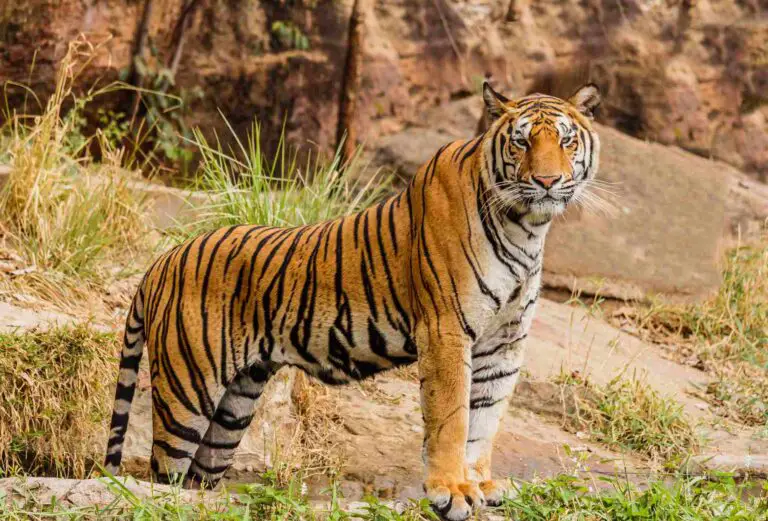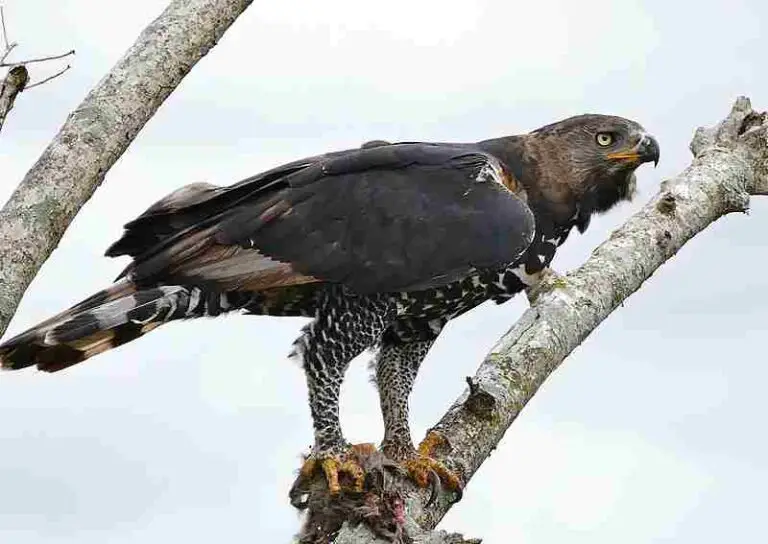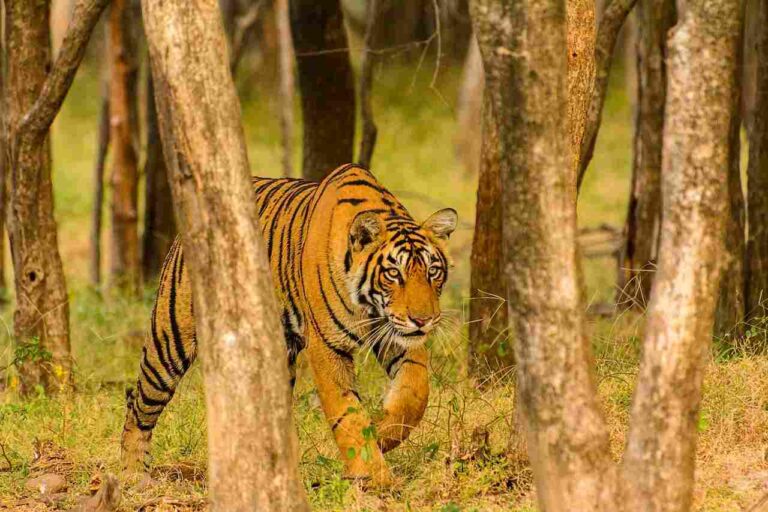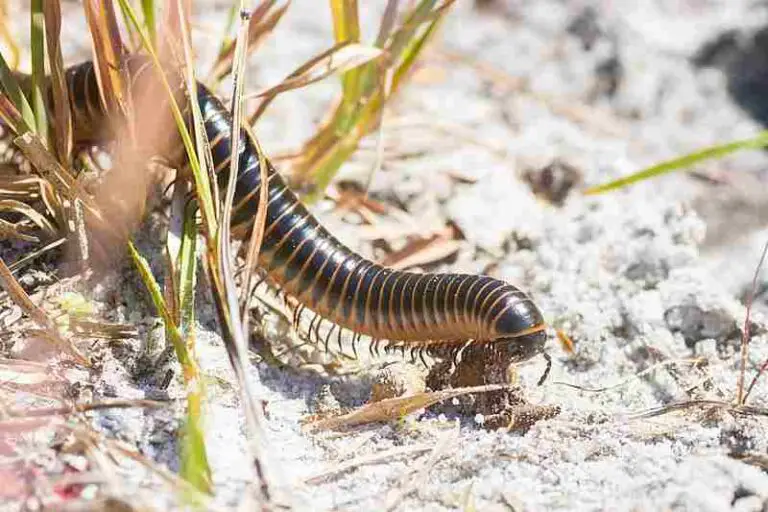Kodiak Bear Vs Moose Vs Grizzly Bear Explained
Kodiak bears have the advantage over moose in a fight due to their predatory nature and higher level of aggressiveness. They are equipped with features that make them efficient predators, giving them the upper hand in a confrontation with a moose.
Additionally, when it comes to a battle between a Kodiak bear and a grizzly bear, the Kodiak bear’s larger size, heavier weight, and greater strength give it the advantage.
Reasons Why a Kodiak Bear Will Win a Moose in a Fight/Physical Confrontation
I). Kodiak Bears are Predatory
Kodiak bears have a distinct advantage over moose in a fight due to their predatory nature. Unlike moose, which are herbivores, Kodiak bears are apex predators. Their diet consists of fish, small mammals, and occasionally larger prey like deer. This predatory instinct gives them the necessary skills and experience to engage in physical confrontations.
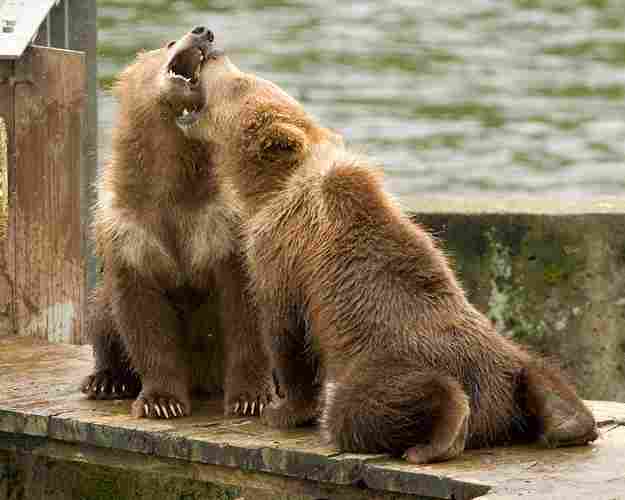
II). Higher Level of Aggressiveness
Another reason why a Kodiak bear would win in a fight against a moose is their higher level of aggressiveness. Kodiak bears are known for their territorial behavior and willingness to defend their space. When faced with a threat, they will not hesitate to attack, using their powerful jaws and sharp claws to overpower their opponent.
In a confrontation between a Kodiak bear and a moose, the bear’s predatory nature and higher level of aggressiveness give it a significant advantage. The bear’s experience in hunting and its willingness to engage in physical combat make it a formidable opponent for the moose. With its strength, agility, and predatory instincts, the Kodiak bear is more likely to come out victorious in a fight against a moose.
Reasons Why a Kodiak Bear Will Win a Grizzly Bear in a Fight/Physical Confrontation
I). Size and Weight Superiority
One of the main reasons why a Kodiak bear would win in a fight against a grizzly bear is their size and weight superiority. Kodiak bears are the largest subspecies of brown bears and can reach impressive sizes. Adult males can weigh up to 1,500 pounds and stand over 10 feet tall when on their hind legs.
In comparison, grizzly bears are slightly smaller, with adult males weighing around 600 to 900 pounds and standing about 7 feet tall. The significant size advantage of the Kodiak bear gives it more power and strength in a physical confrontation.
II). Kodiak Bears are Slightly Stronger Than Grizzlies On Average
In addition to their size advantage, Kodiak bears are slightly stronger than grizzly bears on average. This is due to their adaptation to the harsh environment of the Kodiak Archipelago, where they have to compete for limited resources.
The constant struggle for survival has made Kodiak bears develop stronger muscles and a more robust physique. While grizzly bears are also formidable predators, the Kodiak bear’s superior strength gives it an edge in a fight. With its larger size and greater strength, the Kodiak bear is more likely to overpower a grizzly bear in a physical confrontation.
In a fight between a Kodiak bear and a grizzly bear, the Kodiak bear’s size and weight superiority, combined with its slightly stronger physique, make it the favored contender.
*Kodiak Bear Vs Moose Size, Weight, Taxonomy
a). Taxonomic Classification
When comparing the Kodiak bear and the moose, it is important to understand their taxonomic classification and how they are related. The Kodiak bear, scientifically known as Ursus arctos middendorffi, belongs to the genus Ursus and the species arctos.
On the other hand, the moose, scientifically known as Alces alces, belongs to the genus Alces and the species alces. While both animals belong to the same kingdom (Animalia) and phylum (Chordata), they are not closely related in terms of their taxonomic classification.
b). Appearance
The Kodiak bear and the moose have distinct appearances that set them apart. Starting with the Kodiak bear, it has a thick coat of fur that can range in color from blonde to dark brown. This dense fur provides insulation and protection against the harsh climate of the Kodiak Archipelago. In contrast, the moose has a lighter coat of fur that is typically dark brown. The moose also has a unique feature known as a dewlap, which is a flap of skin that hangs from its throat.
In terms of size, the Kodiak bear is much larger than the moose. Adult male Kodiak bears can weigh up to 1,500 pounds and stand over 10 feet tall when on their hind legs. In comparison, adult male moose can weigh between 1,200 to 1,600 pounds and stand about 6 to 7 feet tall at the shoulder. While the moose is taller at the shoulder, the Kodiak bear’s overall size and weight give it a significant advantage in a physical confrontation.
c). Size and Weight Comparison
As mentioned earlier, the Kodiak bear is larger and heavier than the moose. This size and weight difference can play a crucial role in determining the outcome of a fight between the two animals.
The Kodiak bear’s massive size and weight give it more power and strength, allowing it to overpower the moose in a physical confrontation. Additionally, the Kodiak bear’s larger frame provides it with a greater reach and the ability to deliver more powerful blows.
d). Who Will Win in a Fight Between Them
When considering which animal is overall stronger and likely to win in a fight, it is important to take into account their physical attributes and behaviors. While the moose is a formidable animal with its antlers and size, the Kodiak bear’s sheer strength and aggression give it the upper hand.
The Kodiak bear’s powerful jaws and sharp claws can inflict serious damage on the moose, overpowering it in a fight. Additionally, the Kodiak bear’s experience in hunting and fighting for survival in its harsh environment further enhances its chances of winning in a confrontation with a moose.
e). Key Differences and Similarities
Apart from their size, weight, and physical appearance, there are other key differences and similarities between the Kodiak bear and the moose. In terms of intelligence, the Kodiak bear is known for its problem-solving abilities and adaptability. It can navigate its environment effectively and find food sources even in challenging conditions. On the other hand, the moose is not known for its intelligence and relies more on its instincts and physical attributes for survival.
In terms of habitats, the Kodiak bear is primarily found in the Kodiak Archipelago in Alaska, where it has adapted to the rugged terrain and harsh climate. The moose, on the other hand, can be found in various habitats across North America, including forests, swamps, and tundra regions. While both animals can be dangerous if provoked, the Kodiak bear is generally considered more dangerous to humans due to its size, strength, and territorial nature.
Therefore, the Kodiak bear and the moose have distinct differences in terms of their taxonomic classification, appearance, size, and weight. The Kodiak bear’s larger size and weight give it a significant advantage in a physical confrontation with the moose. Additionally, the Kodiak bear’s strength, aggression, and hunting experience make it the favored contender in a fight between the two animals.
*Kodiak Bear Vs Grizzly Bear Size, Weight, Taxonomy
a). Taxonomic Classification
When comparing the Kodiak bear and the grizzly bear, it is important to understand their taxonomic classification and how they are related. The Kodiak bear, scientifically known as Ursus arctos middendorffi, belongs to the genus Ursus and the species arctos.
Similarly, the grizzly bear, scientifically known as Ursus arctos horribilis, also belongs to the genus Ursus and the species arctos. This means that both bears are closely related and belong to the same species, but they are considered distinct subspecies due to their geographical distribution.
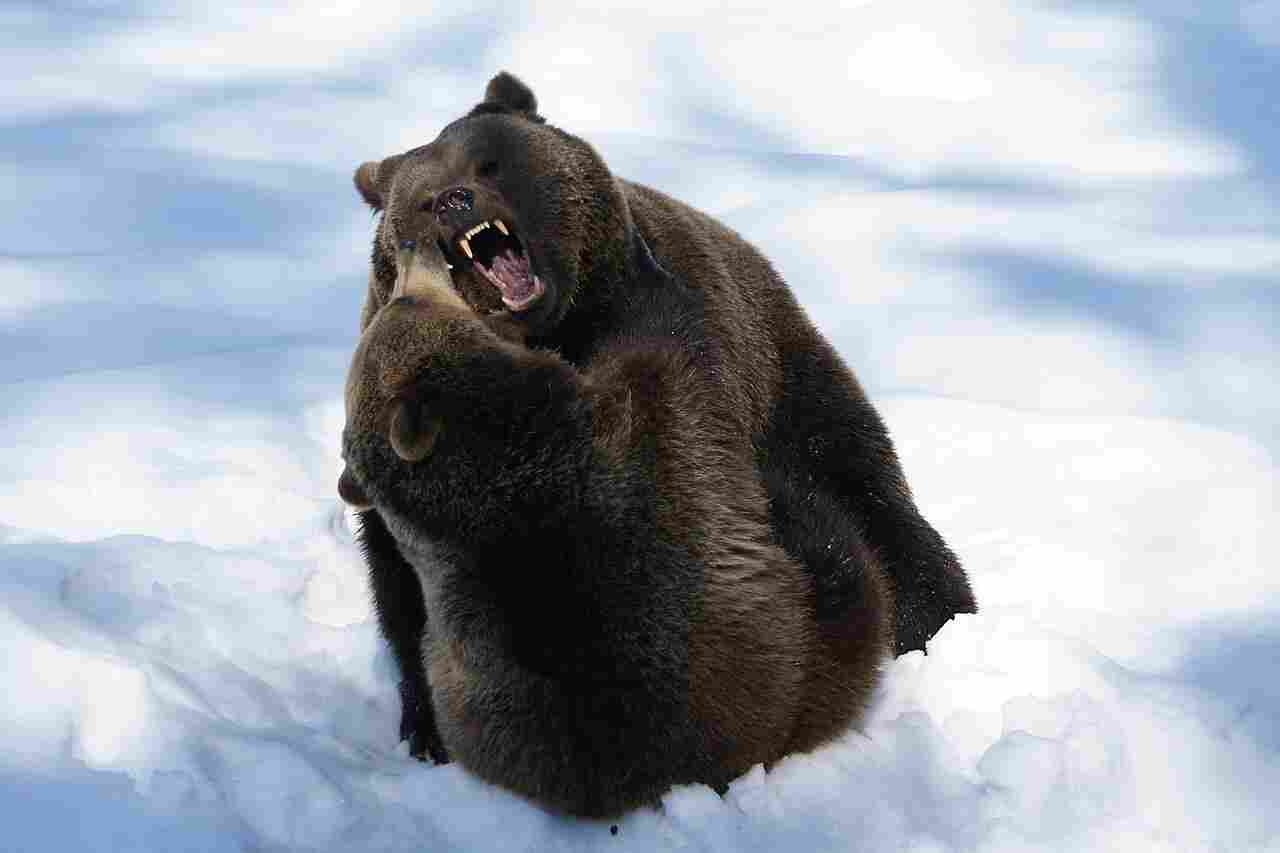
b). Appearance
The Kodiak bear and the grizzly bear have distinct appearances that set them apart. Starting with the Kodiak bear, it has a thick coat of fur that can range in color from blonde to dark brown. This dense fur provides insulation and protection against the harsh climate of the Kodiak Archipelago. On the other hand, the grizzly bear has a lighter coat of fur that is typically brown with white-tipped guard hairs, giving it a grizzled appearance. This coloration helps the grizzly bear blend into its natural environment.
In terms of stature, the Kodiak bear is generally larger and heavier than the grizzly bear. Adult male Kodiak bears can weigh up to 1,500 pounds and stand over 10 feet tall when on their hind legs. In comparison, adult male grizzly bears can weigh between 600 to 900 pounds and stand about 6 to 7 feet tall at the shoulder. While the grizzly bear is smaller in size, it is still a formidable predator in its own right.
c). Size and Weight Comparison
As mentioned earlier, the Kodiak bear is larger and heavier than the grizzly bear. This size and weight difference can play a crucial role in determining the outcome of a fight between the two bears.
The Kodiak bear’s massive size and weight give it more power and strength, allowing it to overpower the grizzly bear in a physical confrontation. Additionally, the Kodiak bear’s larger frame provides it with a greater reach and the ability to deliver more powerful blows.
d). Who Will Win in a Fight Between Them
When considering which bear is overall stronger and likely to win in a fight, it is important to take into account their physical attributes and behaviors. Both the Kodiak bear and the grizzly bear are powerful predators with sharp claws and strong jaws.
However, the Kodiak bear’s larger size and weight give it a significant advantage in a physical confrontation with the grizzly bear. The Kodiak bear’s sheer strength and aggression make it a formidable opponent, capable of inflicting serious damage on the grizzly bear.
e). Key Differences and Similarities
Apart from their size, weight, and physical appearance, there are other key differences and similarities between the Kodiak bear and the grizzly bear. In terms of intelligence, both bears are highly intelligent and adaptable. They possess problem-solving abilities and can navigate their environments effectively. However, the Kodiak bear’s experience in hunting and fighting for survival in its harsh environment may give it a slight advantage in terms of tactical skills.
In terms of habitats, the Kodiak bear is primarily found in the Kodiak Archipelago in Alaska, where it has adapted to the rugged terrain and harsh climate. On the other hand, the grizzly bear can be found in various habitats across North America, including forests, mountains, and tundra regions. While both bears can be dangerous if provoked, the grizzly bear is generally considered more dangerous to humans due to its territorial nature and higher population density in certain areas.
Therefore, the Kodiak bear and the grizzly bear have distinct differences in terms of their taxonomic classification, appearance, size, and weight. The Kodiak bear’s larger size and weight give it a significant advantage in a physical confrontation with the grizzly bear. Additionally, the Kodiak bear’s strength, aggression, and hunting experience make it the favored contender in a fight between the two bears.
Conclusion
In conclusion, this article has explored the differences between the Kodiak bear and the grizzly bear in terms of their size, weight, taxonomy, and physical appearance. We have discussed how the Kodiak bear’s larger size and weight give it an advantage in a fight or physical confrontation with the grizzly bear.
Additionally, we have highlighted the Kodiak bear’s strength, aggression, and hunting experience as factors that make it the favored contender in such a battle. Overall, it is clear that the Kodiak bear is a formidable predator, capable of overpowering the grizzly bear in a fight.
